Week 4 Question: Recently, we spoke to Kevin Locke from the Standing Rock Reservation in South Dakota. This is the location of the Hunkpapa Lakota Sioux, the band where the famous chief, Sitting Bull hails from. Kevin is working on the Lakota language project to ensure the legacy and continuing existence of the Lakota Sioux language. This is a critical component to the continued cultural existence of the tribe.
One form of justice that was traditional to the Indian Nations was a form of reconciliation that brings perpetrators and victims together in talking circles. Crime is seen as an event between individuals not an offense against the state. As we see the effects of historical trauma in Native America, We wonder if this form of reconciliation is a valid and effective mode of healing today for our society? Not only between people but between us and our environments. How do we reconcile our relationship with the natural world of which we are a part?
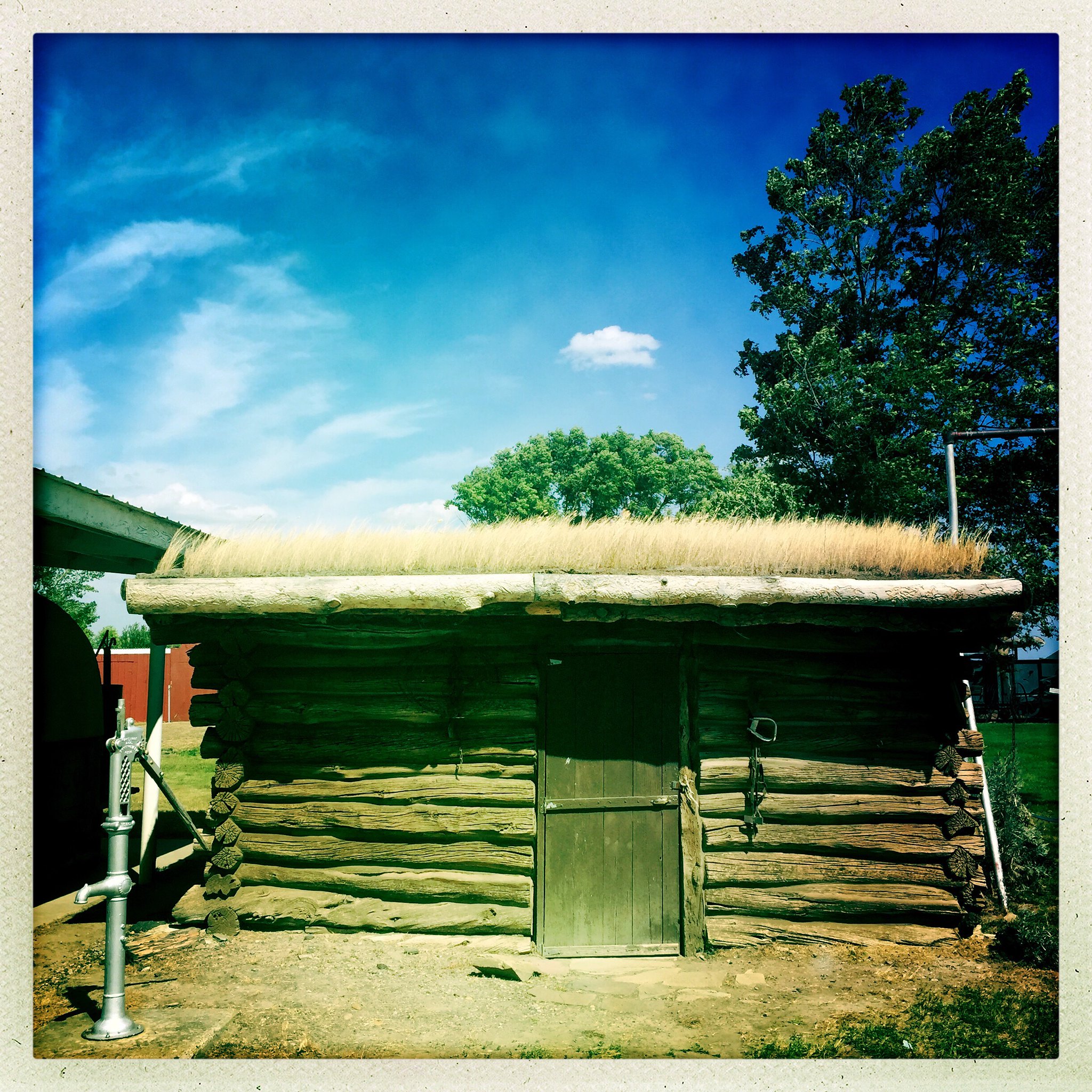
Day 23, July 13
Rest day, Glendive, MT
Today, we repack and clean our supplies. Tomorrow, we have two new riders join us, Pat and Mark Cleveland. Pat brought us more coals from the International Peace fire that was struck at Northeastern Illinois University that was brought down by the Three Fires Nations, Potawatomi Kansas Prairie Band elder, Nowaten Dale Thomas. This international peace project was began at Northeastern in 1996 and since then, spirit of healing has gone out across the world. Recently, coals were brought back to India by Arun Gandhi and also recently placed at the sites of the camps in Auschwitz. In addition to marking our route with survey markers, in key locations, we are going to share in the Peace Fire Project by placing these coals at key sites to mark a gesture of healing at locations throughout the American west. Tomorrow, as we move down the Yellowstone River and the follow the historic route of Lewis and Clark’s return, Lt. Colonel G. A. Custer’s campaign against the Sioux, and the recent tragic oil spill in Glendive, Montana,- we will mark this a spot of healing and record our site and GPS location and share this information with the Northeastern Illinois University project as well as document and contribute to the creation of our own mapping.
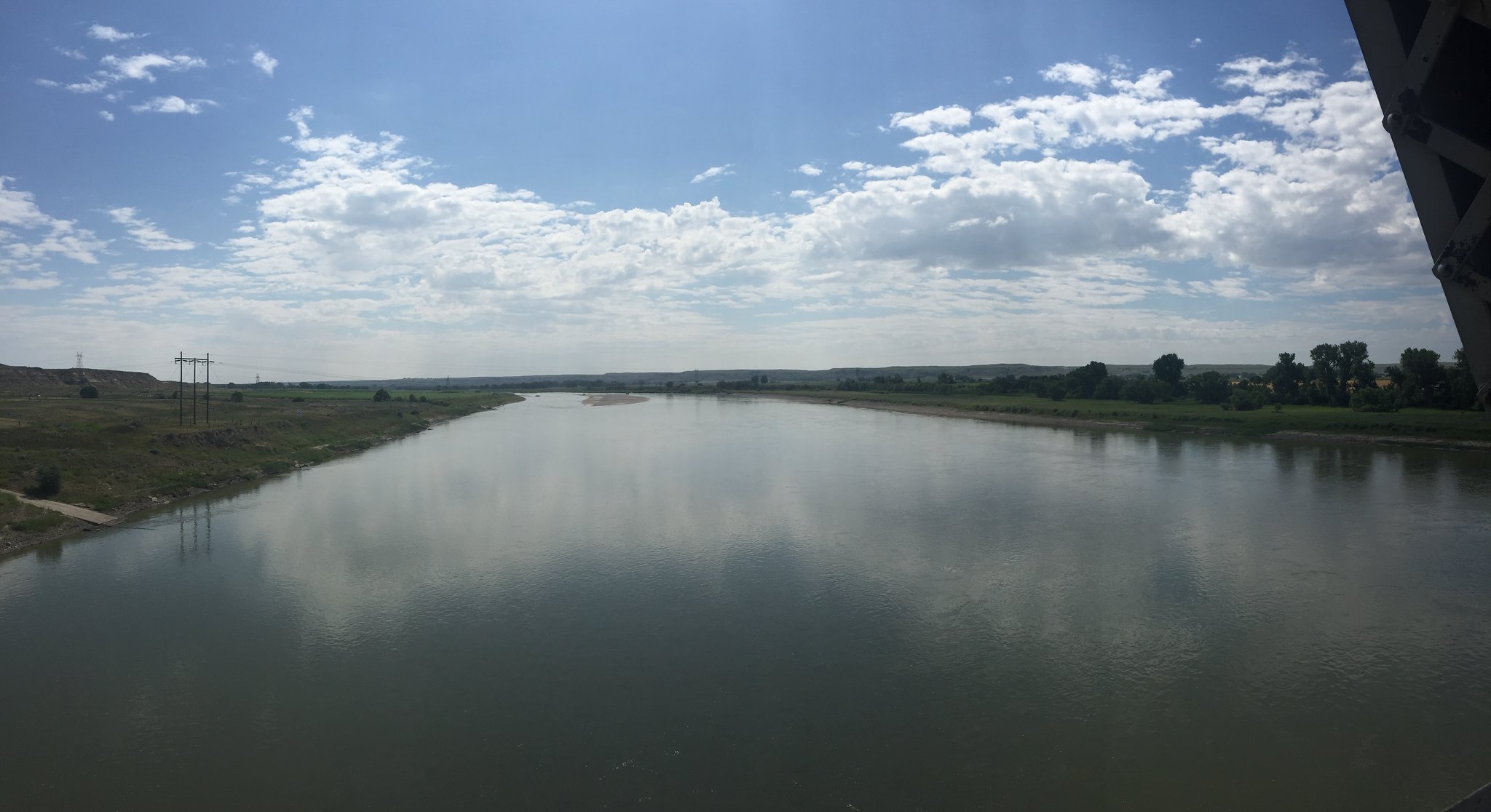

Day 24, July 14
80 miles, Miles City, MT
Today we crossed the Yellowstone and the Powder Rivers. The morning was overcast and pleasant and our ride went quick By the time it reached 1:00pm, the Sun was beating down on us at 90 degrees. The day quickly warmed up and the heat set in. As we crossed these historic rivers that were central to the high plains Indian wars of the 1870’s, it is hard to believe that it was possible to move so many people through this area. Presently, it is very remote, hot, and arid. The landscape doesn’t readily reveal it’s historic significance because it is so sparsely populated and has few ranches but mostly endless fields of rough ground and wild sage, yucca, and grass. The confluence of the Powder and Yellowstone Rivers were the staging areas for Custer as he moved south towards the Little Bighorn and today the area has this key site marked with series of remote signs and pathways overlooking Sheridan’s Butte just west of thePowder River. The Romanticism for this ere quickly dissipates in the harsh reality of the environment. This area looks much like when it did at first contact and it is not difficult to picture Lewis and Clark camping on the edges of the banks off the Yellowstone River (of which they did here in 1804). The idea that this area needed to be secured for the Bozeman Trail so settlers could go west seems like a lost cause from today’s perspective. We marked this area with a survey marker and also in respect for the historic trauma inflicted on the Lakota’s, and international peace coal was laid out along with a tobacco offering. (The use of tobacco by laying it out in a sacred area was a traditional way the plains Indians honored place).

Day 25, July 15
45 miles, Forsyth, MT
A good start today and right out of town of Miles City, we cross the Tongue River. This is a tributary of the Yellowstone River and it extends south to the top edge of Wyoming. This river has also seen it’s share of conflict, especially during the Expedition of 1876. The Northern Cheyenne and the Oglala Lakotas were attacked in Montana at the Tongue River a little further south of our crossing. The Native victory helped kickstart the Great Sioux Wars of 1876 and solidified Native resistance against forcing the Sioux and allies onto reservations and selling the Black Hills. These small muddy river areas seem so minor when compared to today’s geopolitics and again I am amazed that these small forgotten places were once so critical and important in American western development. The small eastern Montana towns seem to defy their past as they struggle to exist in a modern world. Again, most of the countryside is high range country and at times cultivated wheat fields. I can only imagine what the vast herds of buffalo and elk looked like when they once roamed the area. To the early explorers, this place must have must have looked like a vast endless Serengeti plain that was empty. To the European mindset, seeing small bands of nomadic people living here in sustenance economy must have appeared unproductive in regards to exploiting the landscape. It is easy to see how this could have happened because to me in the 21st century, this place still seems so empty. I think sometimes, some of these counties must be reverting back to the notion of a frontier. I wonder if we should allow some of these spaces to return to a Serengeti type managed space, especially when I see small broken down shells of failed homesteads. Maybe that’s easy for me to say coming from a city,- but I suppose there is still something of the original American mythology that keeps all this alive knowing you could still head out into the hills somewhere and build a cabin.

Day 26, July 16
84 miles, Hardin, MT
We left early today and we were riding by 6am,- the day was going to be clear and hot. Climbing out of the valley from where we stayed in Forsyth, we had an incredible view of the Yellowstone River while we rode south. The wide breadth of the river twists through the landscape and the numerous sandbars and sandy islands fill it’s volume. Some of the islands are huge and have cottonwood trees in large clusters. We are also amazed by the height of some of these trees,- they look to be over 100 ft high at times and a girth that indicates they must be well over a century old. At one island, Lewis and Clark camped in 1804. The forests that follow the river’s edge look to be wilderness like and capable of supporting a lot of game. It is not difficult to envision buffalo and elk herds filling the space. As we ride through the landscape the remoteness suggests the possibility of seeing mountain lion. Climbing through a double rise, we see two young eagles hovering over the trees and then coming down to rest on a fence post not far from where we were standing. After the coolness of our early morning departure lifted, we are challenged climbing high ridges with 90 degree temperatures. We pass through Hysham and on towards Custer. This is the location where Colonel G. A. Custer turned south moving towards the Little Bighorn in Yellowstone Expedition of 1876. We are approaching the same river today and will only be about 12 miles away from the battlefield tonight. Today, this tragic site is a National Park and sits adjacent to the Crow Indian Reservation.


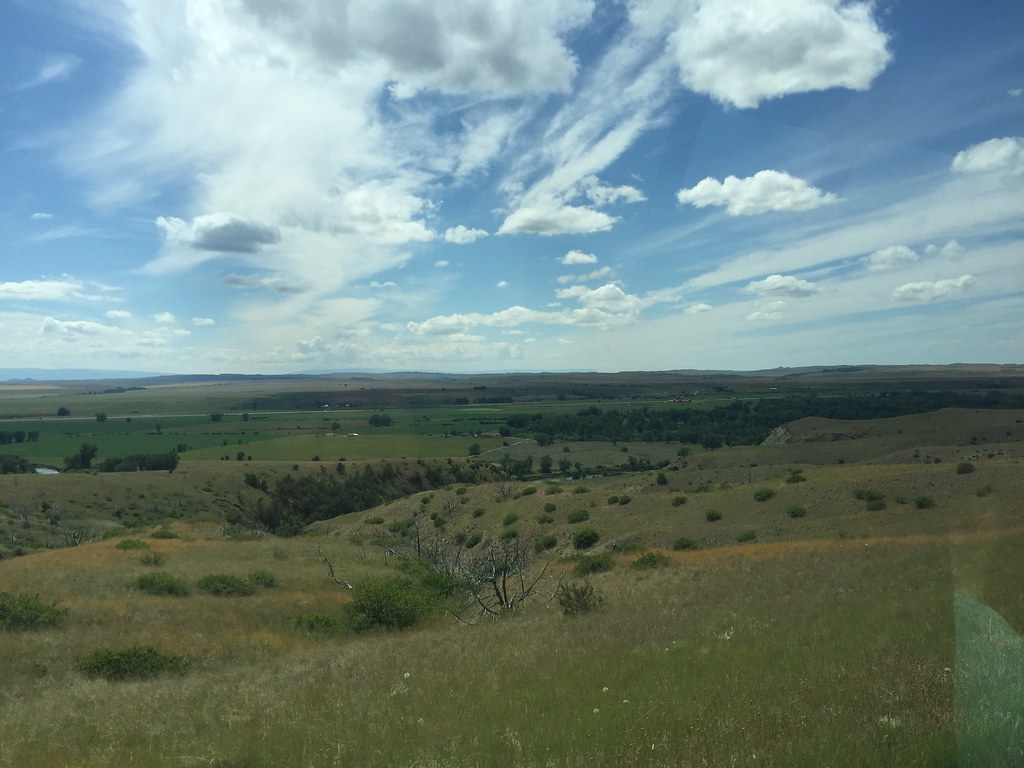
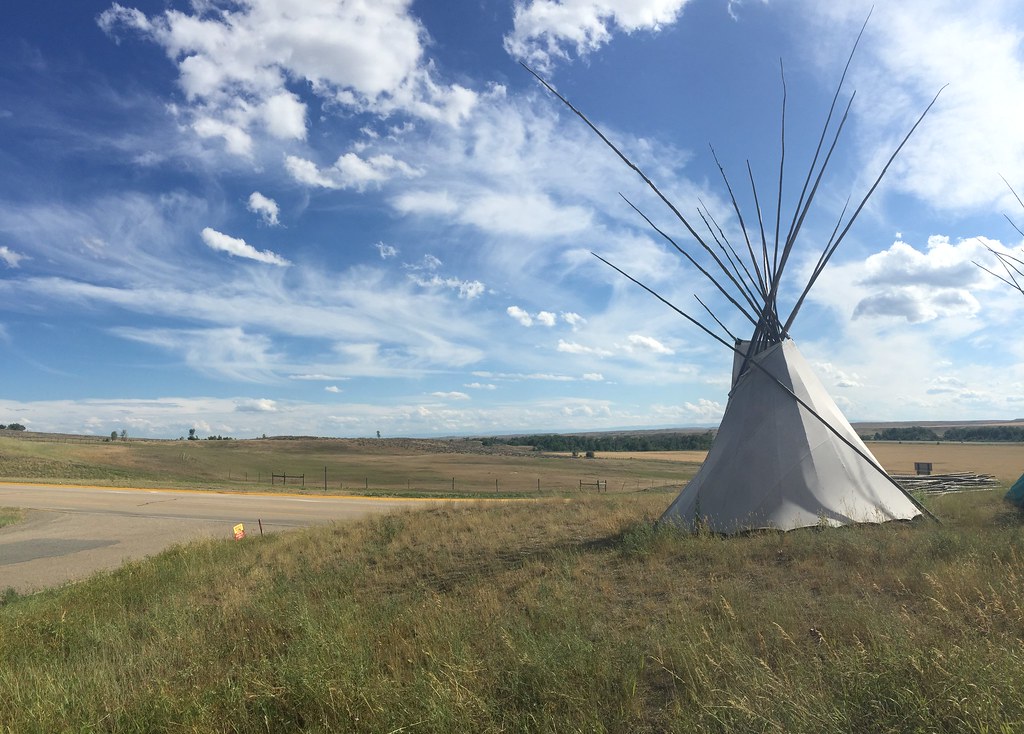
Day 27, July 17
tour day, Little Bighorn Battlefield National Monument, Hardin, MT
Today, Anders joined our group and we set up his bicycle. Afterwards, we visited the Little Bighorn Battlefield National Park. This is a national monument and military cemetery. The name of the park was officially updated in the 90’s to recognize and honor the fallen warriors both native and non native. This was the last major battle of the Plains Indian Wars of the 19th century and the end of the traditional nomadic life of the native peoples of the Montana, Wyoming, and Dakota Territory though the Lakota, Arapaho, and Cheyenne were victorious that day. Arikara and Crow native people served as scouts for the 7th calvary and the battlefield is marked with red marble where native people lost their lives and the U.S. army soldiers fallen are marked with white marble. A native medicine wheel sculpture was also recently added to the park in the spirit of reconciliation welcoming the spirits of native and non native people to join together in the circle. Our Native American Crow guide spoke to us about the history of the conflicts and what led up to the battle. When she was finished with her talk, she informed us that her people and Native people are very forgiving,- but that they have an oral tradition, and that makes for a long memory that never forgets.
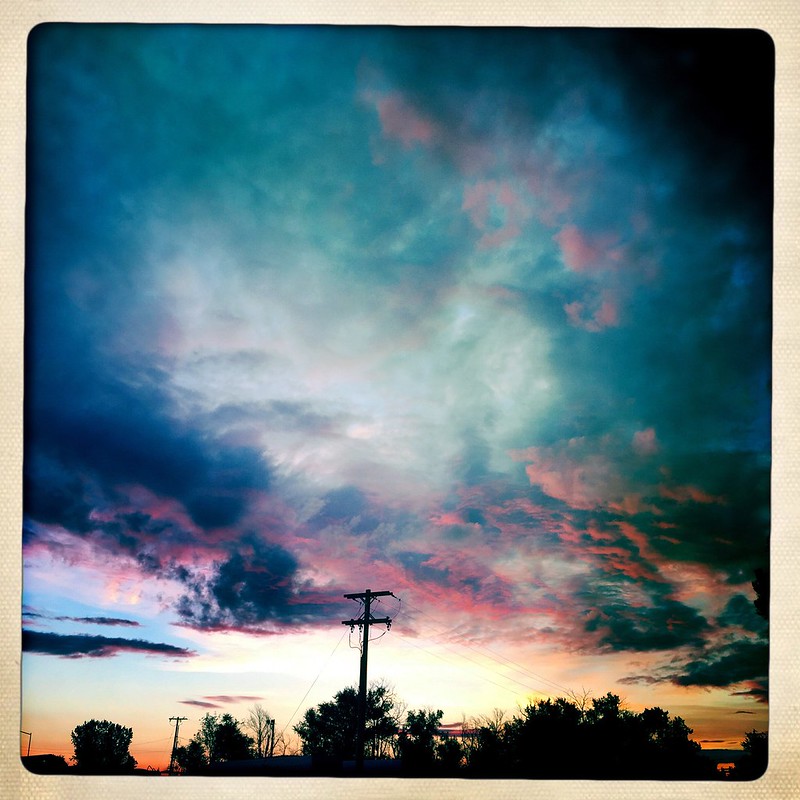
Day 28, July 18
50 miles, Billings, MT
Today we started rolling by 6am and had a great cool day and ride. The headwind gusting to 20mph actually kept us from overheating. The landscape was rolling and high range country with areas spotted with cattle. In some of the tree lined rises it looked as if a forest fire raged through sections of the landscape. This stretch today reminded me of my grandfather’s homestead in Johnson County, Wyoming especially seeing the Bighorn Mountains. Our view to the south kept the buttes in our sites all day. Slow travel makes for an intimate experience of the landscape,- the idea of state lines seems rather abstract as we watch the change in landscape so gradually. Wetlands in the Dakotas give way to rangeland and sage becomes more abundant. I am beginning to see land in terms of watersheds, buttes and natural coves. After a long climb we had a vast expansive view of Billings and were rewarded with a nice 5mile downhill run into the city.
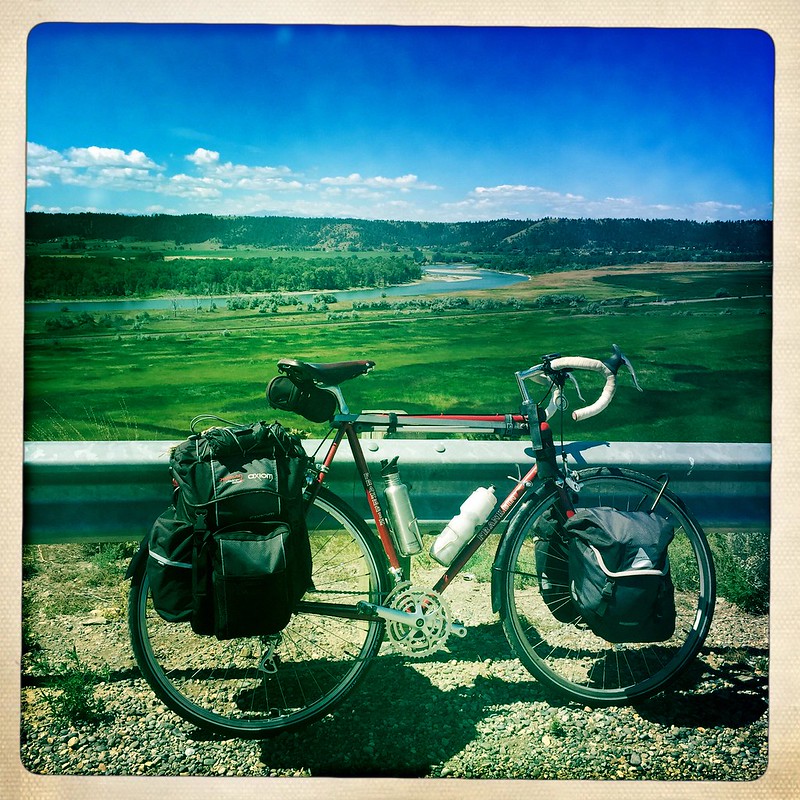
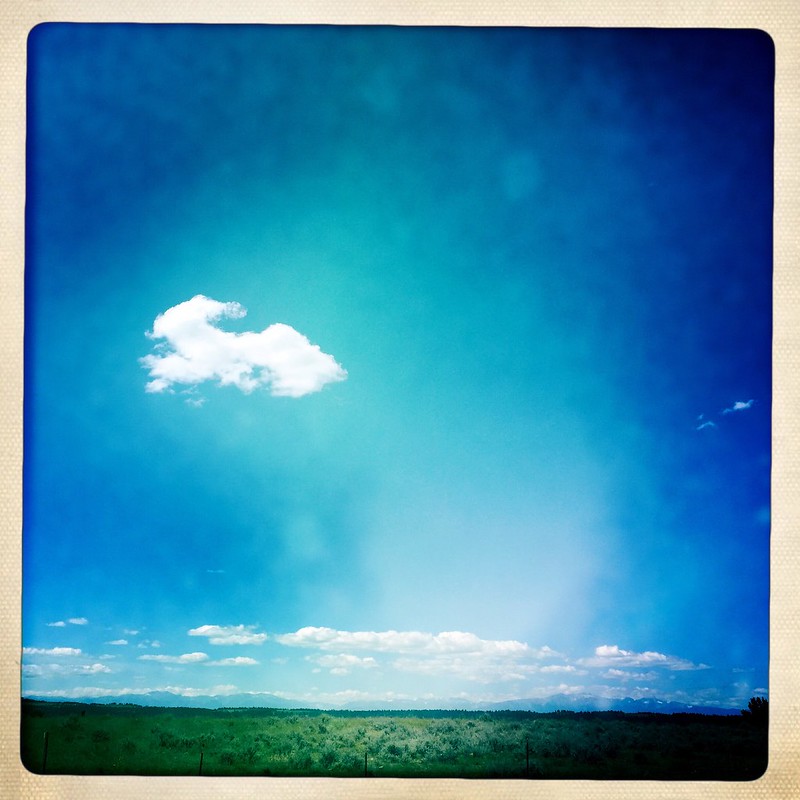
Day 29, July 19
40miles, Columbus, MT
Today we rode along the Yellowstone River and once again faced a headwind. It is something we expect and it seems to pick up in speed as we approached the Bighorn Mountains today. We saw a young falcon and a pair of eagles hovering over the bluffs that overlooked the river and the views were incredible and the day was clear. We are at about 3500 feet in elevation and are approaching Bozeman pass the day after tomorrow though following the Yellowstone puts us in the valleys as we move northwest.
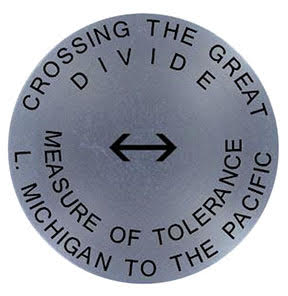
Comments 6
Don & Julia,
Your journey and especially, your pictures, have inspired Danny & I to go cross country biking. It took me awhile to find it, but the Kal-Haven trail in MI, from Bloomingdale to South Haven is 17.5 miles long and mostly downhill (dropping from an elevation of 732 ft to 584 ft). My question to you two, only partly tongue-in-cheek: do you think 17.5 miles is too far for two newbies on rented bikes? 😉
Cordially,
Jack Moran
Author
Any amount is good! Goo for it!
….Don, Julia, Anders
sorry to be so long in responding to your journal entries, which, by the way, were lovely, if not hard to read at times. i just made the transition from of returning home after being in rehab from knee replacement so that is where my head has been.
i also needed a day to think about the restorative justice (RJ) questions that were asked……such good questions!!! i hope my thoughts are consistent with the questions, not sure myself on this, but here goes with the thoughts stewing in my head.
RJ is a philosophy & so RJ focused processes are not always done in Circles; however, it is the Circle format/processes (with use of talking piece) that allows for the greatest depth, understanding of self & others, discovery of root causes & other RJ values that ultimately lead to the develop, enhancement & repair of relationships & isn’t this what is needed to resolve so much of what is wrong?
Unfortunately, RJ, like every other philosophy has it limitations as you have to have willing partners to sit in Circle and partners that believe in RJ values. Circles are as worthy today as they have always been in terms of the meaningfulness of what is learned, but does this matter if today’s fast-paced, quick-results culture doesn’t not allow for its use?
I guess to sum things up, to sit in Circle & use talking piece requires that we listen to others, contemplate what others have to say, listen to diverse perspectives, articulate our own thoughts and feelings & ultimately find a resolution that all can live with. Add to this RJ values and we now have to consider our own responsibilities & thereby learn about the responsibilities of others as well, consider the underlying causes of actions & problems AND place value on relationships & making right the harms we have caused others.
How could any of this NOT be helpful in working to resolve our relationships with others, our relationship with ourselves & our relationship with our environment?
Author
We agree the circle requires us to listen deeply, to articulate,- our own understanding and consider the sharings of others as viable perspectives.
It is in the consideration of these many perspective that we can come to a greater understandings and wholeness.
In our journey across the west, we have encountered many other people and journeyers who have their own stories and perspectives. Each of these stories have given us pause to consider their voice in the circle. We are grateful for all the sharing.
Don & Julia Pollack & Pat Cleveland
Restorative justice… this is a sticky point – how much can people retroactively give back to others to make amends.. and that is progress or is that history? I am reminded of the recent trial for the former Nazi solider. He got charged, however the issue is will he live the remainder of his life in jail or will they let him go as is? Now as the Native Americans population dwindles, it is important to keep language and culture awareness and in this world we live in.. identity is such a thing.
The descriptions evoked by your travels, wow that is just wow.. because… all the bison gone – that is sad.
Author
It seems that the restorative justice process is something that at least should be implemented in grade schools to prevent the pipeline from school infractions to more serious infractions to jail that plagues so many poor and minority children.
-Don & Julia